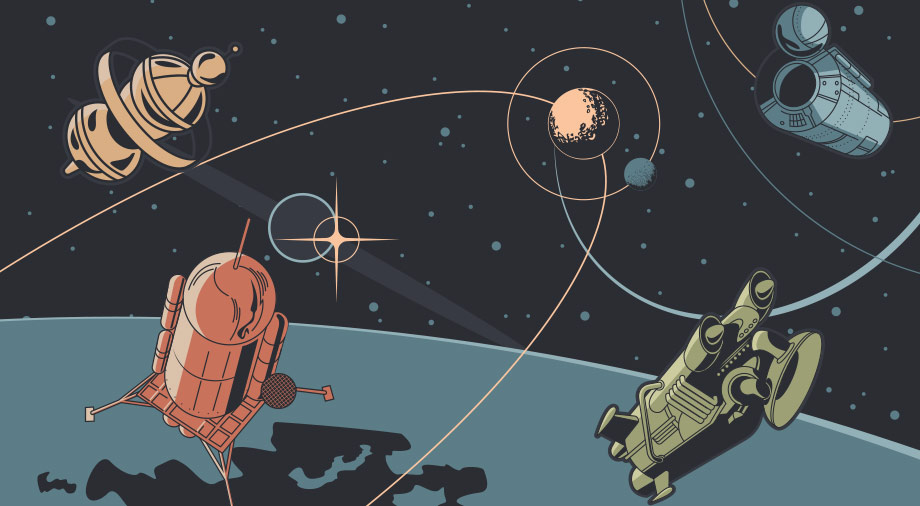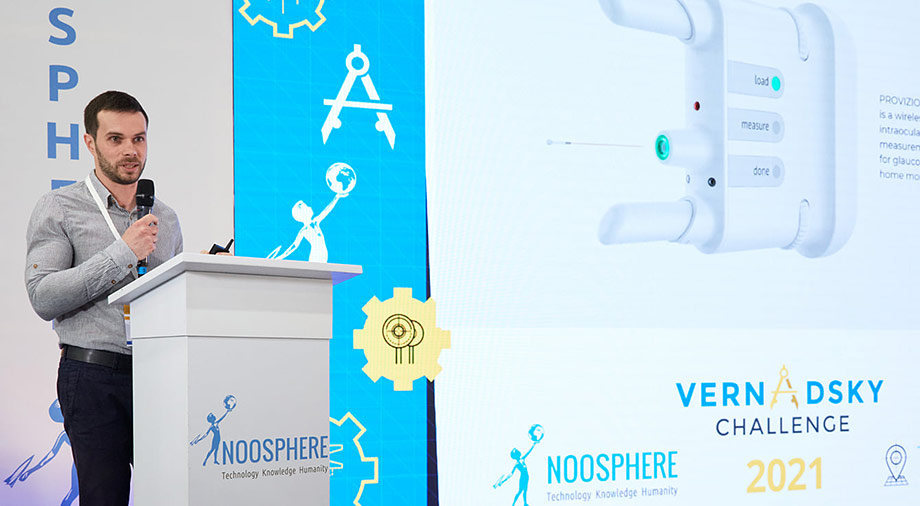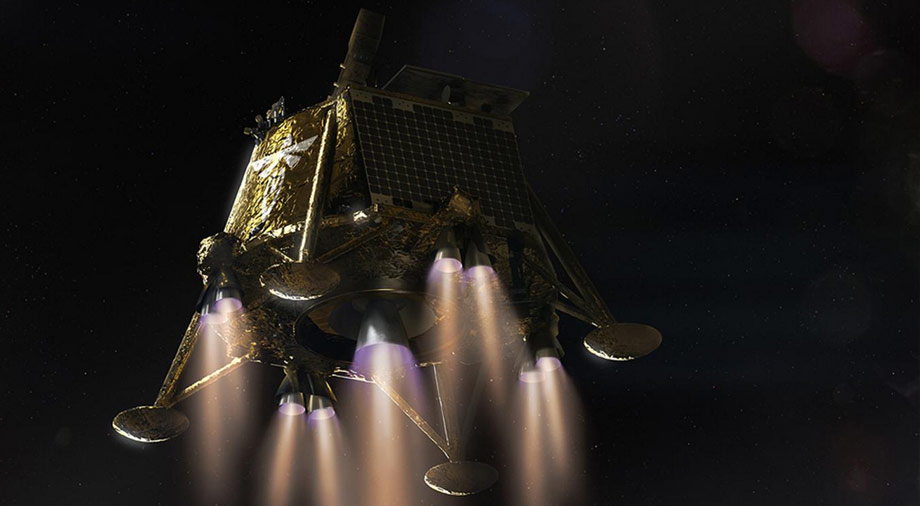Humanity recently celebrated the 64th anniversary of the space age. We have long taken space, a resource that has always been available, for granted. Most people actively use technologies that emerged from space exploration, without knowing about their origin, while rocket launches usually attract attention only if something goes wrong.
But this is a deceptive routine. In reality, space was, remains, and will remain for a long time a very complex, dangerous, and unforgiving environment. This time around, however, we would like to tell a story about how humanity has begun to master this arena. This is the birth of astronautics – from exotic ideas of the distant past to the first successful rocket launches.
Early space travel projects
We will likely never know who first thought about the idea of space travel. But it is believed that this concept began to gain popularity in the 17th century – after a series of epochal changes in our beliefs about the structure of the Universe, caused by the invention of the telescope, the discovery of the laws of planetary motion and the gradual spread of the heliocentric system.
The first published work that concerned a human on the moon was the fantasy story “Somnium”, written by Johannes Kepler. Soon other authors, such as Francis Godwin and Cyrano de Bergerac, began to describe fantastic journeys to other celestial bodies.
An important milestone was the crowning work of Isaac Newton, published in 1687 – “The Mathematical Principles of Natural Philosophy”. He not only formulated the famous law of universal gravitation and the three laws of motion, but also laid down the theoretical foundations of modern ballistics. Newton proposed a thought experiment in which a cannon is placed on a mountain with a summit outside the atmosphere. The more powerful the charge used when firing, the farther from the mountain the projectile will fly away. Finally, upon reaching a certain power of the charge, the projectile will develop such a speed that it will not fall at all, entering a permanent orbit around our planet. This speed is called the first cosmic speed. For an orbit located near the Earth’s surface, its value is 7.91 km/s.
Jules Verne used this concept as the basis for his famous novel “From Earth to the Moon”, in which he describes a flight to the moon inside a hollow cylinder fired by a giant cannon. It is interesting that the writer chose Florida as the placement for this giant cannon – the same place from where, a century later, a mission was launched that landed people on our natural satellite.
It is hardly worth explaining why in reality this idea for space flight, described by Verne, would be unrealizable. And as we already mentioned, the French writer was far from the first to “send” people into space. But that’s not the point. “From the Earth to the Moon” was the first novel where the author decided to approach the description of space travel from a scientific standpoint, even conducting a number of calculations to substantiate it. That is why the work of Jules Verne captured the imagination of his contemporaries, and even 150 years later, we remember his name perfectly – unlike many other writers and inventors of that era, who also came up with various options for space flight.
There were a lot of them. Various concepts were proposed for traveling into space: the use of water and electric engines, special balloons and airships, launching a ship with the help of a volcano, and even giant catapults that were supposed to throw a capsule, containing travelers, directly into space. From the standpoint of modern knowledge, these ideas are at best humorous. However, as an actual theory of spaceflight did not exist, inventors and science fiction writers were limited by the the interpretation of the laws of physics discovered at the, time and their own imaginations.
A radical change in the understanding of what is really necessary for space flight occurred in the 20th century, driven by people such as Konstantin Tsiolkovsky, Robert Goddard, and Hermann Obert.
The theoretical foundations of space flight
Of course, neither Tsiolkovsky, nor Obert, nor Goddard were the creators of the rocket. It is believed that the first missiles appeared in China in 3rd century BC. Initially, they were used for fireworks and entertainment, but over time, they began to be used in military affairs. In the Middle Ages, the idea of rockets came to Europe. Already in the 16th century, engineer Konrad Haas described the design of a multistage rocket. And at the beginning of the 19th century, the British army adopted Congreve’s combat missiles, which were actively used along with conventional artillery.
Back then however, no one saw a rocket a means of reaching space. The situation changed at the beginning of the 20th century, when Konstantin Tsiolkovsky theoretically proved the possibility of carrying out space flights using thrust from a rocket engine. The works of Hermann Obert, published in the 1920s, supplemented the theoretical basis of interplanetary flights by proving that even with the then-existing level of technology, it was possible to build a rocket that could go beyond the Earth’s atmosphere and become a satellite of our planet, or go on a journey to other celestial bodies.
In an extremely simplified form, the essence of the theory of space flight is as follows. During launch, the rocket engine expels its exhaust in the opposite direction of its flight path at high speed, a technique that can also work in the vacuum of space. As the rocket’s speed increases, its mass decreases, which, with constant thrust, leads to an increase in acceleration. At the same time, the rocket consists not only of fuel but also of other components, which eventually become an unnecessary load. Therefore, in order to improve the characteristics of the rocket and increase its carrying capacity, after reaching some stages of flight, these parts must be dropped. This means that a rocket intended for space flight must consist of several stages.
Another important discovery by the pioneers of the rocket industry was that the most efficient fuel for a rocket is not traditional gunpowder (or some other solid), but a two-component liquid mixture consisting of an oxidizer (for example, oxygen) and fuel (hydrogen, kerosene, ethyl alcohol, gasoline, etc.). In 1926, Robert Goddard was able to prove the workability of the concept by launching the first-ever liquid-propellant rocket.
If we put together the main discoveries of the pioneers of the rocket era, they boiled down to the following: a rocket with a sufficiently light and strong structure, operating with the correct fuel and having the required number of stages, will be able to develop the first space speed and enter orbit around the Earth.
The concept of a rocket as a vehicle for space travel very quickly became mainstream. Cinematography contributed to this popularization. The German film “Woman on the Moon”, 1929, showed a flight to the moon using a liquid-propellant multistage rocket. Interestingly, Hermann Obert was a consultant on the movie.
Around that time, various associations of aeronautics and rocketry enthusiasts, who dreamt of space travel, began to emerge in the leading countries of the world. Their participants exchanged ideas, considered how to solve various problems that may arise during interplanetary flight, and also tested prototypes of rockets and rocket planes.
During the 1937-1939 period, members of the British Interplanetary Society designed the “Lunar Rocket” – the first-ever detailed and potentially realizable project of an aerospace system intended for flight to the Moon. It consisted of a six-stage solid-propellant rocket and a three-person spacecraft. Members of the society even managed to make prototypes of some of the components of the “Lunar Rocket”, but the project’s further development was halted due to the start of World War II.
V-2, the first satellite and NASA
The Second World War was truly a turning point in the history of the development of rocketry. The armies of all the belligerent powers made extensive use of missile weapons. They were launched from multiple rocket launchers and aircraft and were used to combat tanks and ships. But the main “star” of the conflict was the German V2 (German: Vergeltungswaffe 2, “Retribution Weapon 2”) – the first long-range ballistic missile in history. It was the V2 that became the first man-made object to rise above the 100 km mark, adopted as a conditional boundary between the earth’s atmosphere and outer space, in 1944.
The V2 did not play any special role in the war: Germany invested huge amounts of money into its development, but the combat effectiveness of the missile turned out to be extremely low. Nevertheless, the rocket still clearly demonstrated the prospects opened up by this type of weapon. It wasn’t surprising that after the end of the war, the victorious powers began to study the technical documentation surrounding the rocket, its surviving copies, and even hired the specialists involved in its creation.
Subsequently, the United States and the USSR conducted many launches of captured German missiles for research purposes. It was thanks to the V2 that we obtained the first-ever photographs of our planet from space. They were captured by a camera aboard a rocket launched from the White Sands Missile Range, New Mexico, on October 24, 1946.
It is noteworthy that in 1946, members of the British Interplanetary Society proposed remaking the V2 by installing a capsule with a pilot inside its head. According to modern experts, the project was well developed for the time, and, if implemented, would have made it possible to start suborbital flights into space about ten years earlier than they actually occurred. However, the British authorities were not interested in the proposal, and it remained on paper.
In subsequent years, the superpowers continued the development of missiles, gradually creating prototypes that had better flight range and carrying capacity. Of course, their main “customer” was the military, who wanted to get their hands on a means of delivering nuclear weapons to other continents.
However, in the mid-1950s, various civilian projects began to appear, proposing the launch of artificial satellites and pilots into orbit with the use of rockets. In 1955, the United States made an official statement of intent to launch the first satellite between July 1, 1957, and December 31, 1958, as a contribution to the International Geophysical Year. Just a few days later, the Soviet Union announced that it would also launch its own satellite in the near future. But this message was practically unnoticed by the Western public, while most experts perceived it with a great deal of skepticism, or even simply considered it ordinary propaganda.
Indeed, in theory, the United States should have become the undisputed leader of the space race and won the competition before it even began. The country had at its disposal large amounts of resources and a certain technological advantage. But that was only at a first glance. At that time, missiles were not considered a critical factor for national security, since the United States already had a large fleet of strategic bombers. Therefore, the Americans could afford to take their time. The USSR, on the other hand, did not have a comparable bomber aircraft fleet, so the Soviets relied on intercontinental ballistic missiles, focusing almost all available funds on their development.
In addition, the American advantage in resources was leveled by the presence of several parallel missile projects at once. The U.S. Army, Air Force, and even the Navy had similar projects, and their competition harmed their common cause.
In September 1956, the Jupiter-C rocket launched by Wernher von Braun’s team reached a speed of 7 km/s, just a little short of orbit. At the same time, instead of fuel, the rocket used sand in the tanks of its fourth stage. This was done on purpose: to prevent the rocket from “accidentally” gaining the first space speed and thus outspeeding the Vanguard project, which by that time had been officially selected to launch the first American satellite. Considerations of national prestige played an important role here. The American leadership did not want the first satellite to be launched by a team led by a German scientist. If not for this circumstance, then, most likely, the space age would have begun back in 1956.
But when on October 4, 1957, the Soviet Union announced the launch of Sputnik, it was as if a bomb had gone off. Many Americans were downright frightened by the little star in the night sky. After all, it served as a clear confirmation that the Soviet Union possessed a missile capable of reaching U.S. territory.
To reassure the public, the U.S. government decided to speed up work on the Vanguard project. However, the launch attempt, which took place in December 1957, ended in a resounding failure. During this time, the Soviet Union sent another satellite, this time containing the dog Laika, into space. After that, the United States had no choice but to give the green light to Wernher von Braun’s team. On February 1, 1958, the Jupiter-C rocket successfully launched the first American satellite, Explorer 1, into orbit.
The “satellite crisis” had another important long-term impact. In order to avoid a situation when the presence of several independent projects at once led to a lag behind the USSR, the American leadership decided to entrust the implementation of all civil space programs and research in aerospace to a single organization. This organization was signed into existence on July 29, 1958, and was named the National Aeronautics and Space Administration – NASA.






